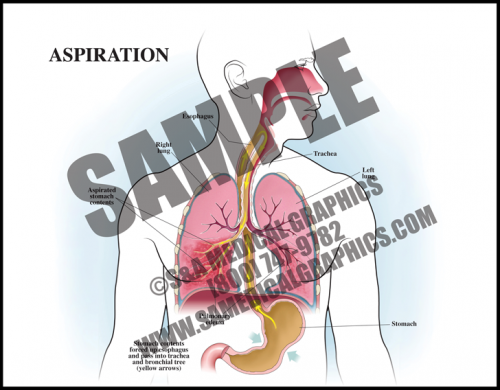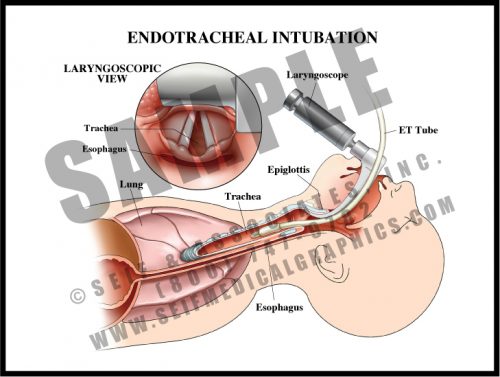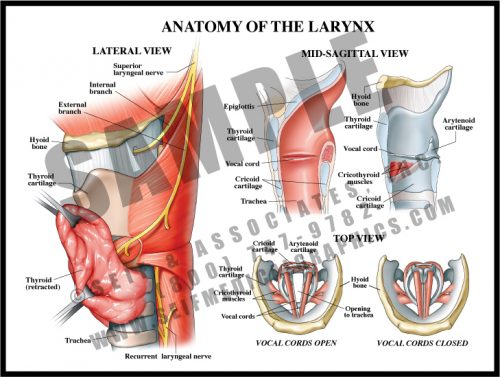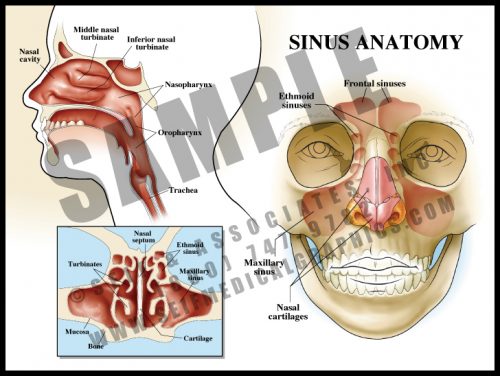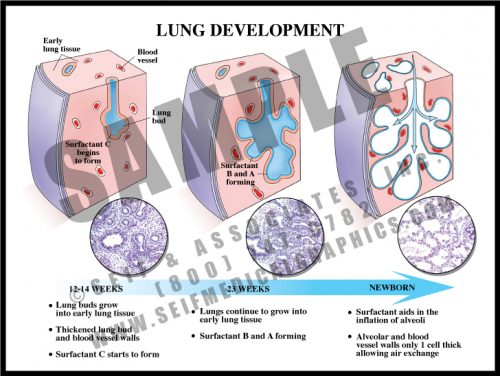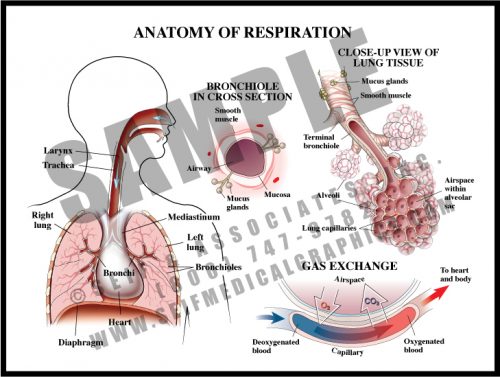- Aspiration occurs when foreign material, of either oropharyngeal or gastric contents, is inhaled into the lungs.
- Aspiration can cause a number of respiratory problems depending on the quantity and nature of the inhaled material. Aspiration of gastric contents causes pulmonary edema and often pneumonia.
- The risk of aspiration is increased by conditions associated with altered or reduced consciousness, esophageal conditions like dysphasia, certain neurological disorders, and mechanical conditions like NG tube placement, endotracheal intubation, etc.
-
-
- Intubation is required when a patient has difficulty breathing and needs ventilatory assistance. A hollow tube is inserted into the trachea and held in place by a small inflated balloon. If intubation is required for more than a few weeks, a tracheostomy is used to replace it.
- Most endotracheal intubations are done using a laryngoscope, which holds the tongue and epiglottis out of the way while the health care provider inserts the ETT (endotracheal tube).
- Following ETT placement, the provider listens for bilateral breath sounds, watches for the chest to rise, and usually orders a portable chest x-ray to check ETT placement.
-
- The larynx is composed of a number of cartilaginous structures, muscles and ligaments which maintain the patency of the airway and hold the vocal cords under tension during speech.
- The large thyroid cartilage, which lies beneath the thyroid gland, is connected to the hyoid bone by a strong ligament (thyrohyoid ligament), and the epiglottis arises from its internal surface. All internal structures with the exception of the vocal cords are covered by a pink mucosal lining.
- The small cartilages to which the vocal cords are attached are moved by tiny muscles under the control of the recurrent, superior and inferior laryngeal nerves. These muscles make small adjustments in the opening between the cords, allowing different pitches of sound to be created.
-
- Sinuses are hollow spaces within the facial bones. They are lined with a ciliated mucosa which has mucus glands. The sinuses are interconnected via a series of openings, allowing mucus to drain into the nose and pharynx.
- The sinuses help to warm inhaled air before it enters the lungs.
- Sinuses are prone to infection or reaction to allergens and react by mucosal swelling and overproduction of mucus. Chronic inflammation or infection can result in permanent thickening of the mucosa and reactive bone changes. Surgery is designed to facilitate drainage and relieve pressure; in some patients it must be repeated a large number of times.
-
- The main reason that preterm infants are considered high risk is because their lungs are immature.
- Lungs develop as the airways bud and branch into an anlage of mesenchymal cells. Since respiration requires oxygen and carbon dioxide to cross over two layers of tissue (alveolar wall and capillary wall), these relatively thick-walled airways in preterm babies permit little gas exchange. High-pressure ventilation is required to assist the infant, and this pressure frequently results in the development of chronic lung disease (bronchopulmonary dysplasia).
- In addition, there are too few alveoli present for efficient oxygen supply until 2-3 weeks prior to term. Lungs continue to grow and develop new alveoli for several years after birth.
-
- The lungs are composed of thin-walled alveoli whose sacs are covered by a meshwork of capillaries. This is where oxygen and carbon dioxide are exchanged.
- The trachea carries air from the nose and mouth to the bronchi, which branch to each lung. These divide several times to become very small bronchioles, which directly supply the alveoli.
- The airways are lined with a ciliated mucosa which carries debris upward to the mouth on a layer of mucous, where it is swallowed. These mucosal membranes can swell in reaction to allergens, bacteria and viruses, leading to narrow airways and respiratory symptoms.
